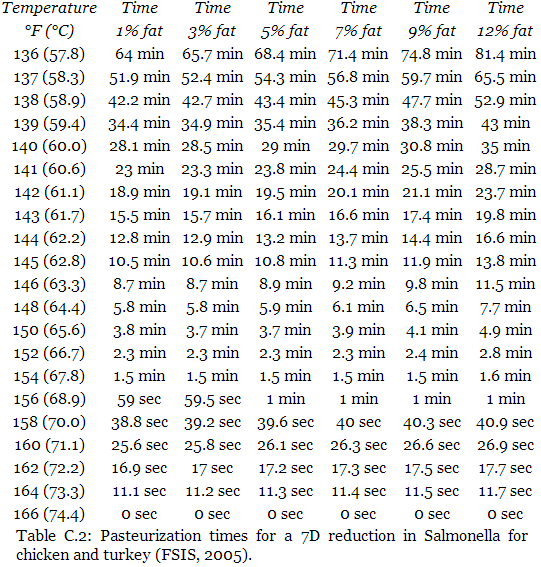diggingdogfarm
Master of the Pit
:biggrin: Well, I've had a brief conversation with a nice lady named Karen. She's very knowledgeable and willing to help if asked.
Here's how "she" answered my question:
"The poultry temperature of 165 degrees F is designed to eliminate "Salmonella." The National Advisory Committee on Microbiological Criteria for Foods (NACMCF) recommended the single, safe minimum internal temperature of 165 degrees F for consumers to cook poultry. The recommendation to consumers is designed to achieve a 7-log reduction of "Salmonella." Salmonella levels in poultry are higher and Salmonella are becoming more heat resistant. This process will also control "Campylobacter" and high pathogenic avian influenza (H5N1) if it arises.
Our recommendation for whole cuts of meat is 145 degrees F with a 3 minute hold time. The hold time allows the internal temperature to gradually rise to 160 degrees F which makes the meat safe."
Not thinking of temperature rise during the 3 minute hold time for whole cuts of meat, was the reason for my misunderstanding.
Yup, but her last sentence doesn't make sense. The amount of temperature increase in carry-over cooking depends on the size of the piece of meat and other factors.
FWIW, here's the pasteurization chart for chicken and turkey.......
~Martin
Last edited:







